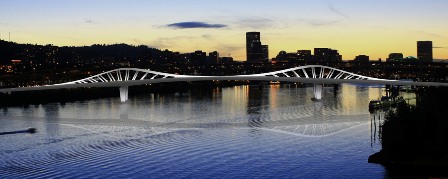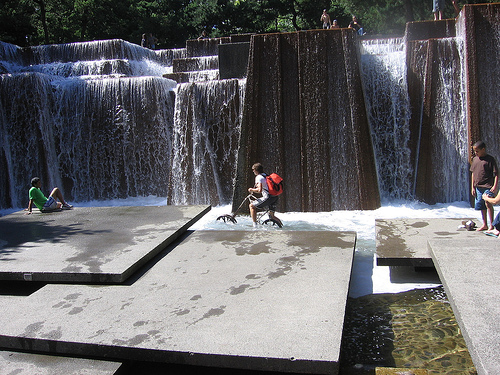
“Government should practice the same principle as doctors,” President Obama said the other day. “First, do no harm.”
He was responding to critics who say he’s been too timid on the banks, shying away from the get-tough part of the takeover business. Going too far, Obama argued, could make things worse instead of better.
Whatever you think of Obama’s tactics in this particular case, “First, do no harm” isn’t a bad principle for government, even — and maybe especially — when government decides it’s time to be bold. Be bold, yes. But also be sure. Before you do something radical, make sure it’s actually going to make things better rather than worse. That isn’t a conservative or a liberal stance. It’s just a sensible one.
It’s a principle that Portland Mayor Sam Adams seems to be ignoring in his rush to tear down Memorial Coliseum — one of the city’s best-designed buildings — and replace it with a $55 million minor-league baseball park as part of a complicated package to free PGE Park for exclusive use by a new major-league soccer team, push through a government-funded $200 million convention center hotel, and synergize with a Portland Trail Blazers plan to transform the Rose Quarter into an entertainment district that would seem to be more at home along a suburban shopping thoroughfare than in a vital corner of the central city.
Whoa, Nellie. What’s that choking sound? It’s the gurglings of architects, preservationists, planners, veterans groups, North/Northeast Portland residents and economic analysts reacting to having something shoved down their throats. In a word, ouch.
Fellow Scatterer Barry Johnson, in a post headed Demolishing Memorial Coliseum — a bad idea inside a bad plan, has an excellent analysis on his Oregonian/Oregon Live blog, Portland Arts Watch; read it here. Oregonian reporter Mark Larabee filed a good report on gathering opposition to the Rose Quarter steamroller here; and The Oregonian’s Ryan Frank reports here on Adams’ effort to push for the 600-room convention center hotel, a plan that so far is opposed by Multnomah County exec Ted Wheeler, whose support is necessary if the thing is going to get built. In addition, architecture and design writer Brian Libby has been weighing in frequently (and critically) at his Web site Portland Architecture, and Tim DuRoche has this sharply worded argument on his blog for Portland Spaces magazine.
I don’t want to turn this into a diatribe about public spending on sports. I happen to be a lifelong baseball nut, and although soccer isn’t my game, I know it has a big following here. A couple of points: Despite the argument that PGE Park is a bad space for Triple-A baseball, in fact it’s a terrific place to watch a ballgame, a little gem along the lines of Seattle’s old Sicks Stadium or even Boston’s Fenway Park. Sure, it usually has far more empty seats than filled ones — but that’s because baseball destroyed its minor-league system decades ago in terms of audience allegiance (how do you follow a team when the players shift week to week?). And this: Fifty-five million dollars for a 9,000-seat minor-league park? Does it get torn down in turn if and when the city lands a major-league franchise?
As for Memorial Coliseum, yes, it’s been allowed to get shabby. But that’s fixable. And a little imagination could turn it into a genuine attractor (and economic kick-starter) for the area. A few years ago, when he was The Oregonian’s architecture and planning writer, Portland Spaces editor Randy Gragg championed a plan that would turn the Coliseum into a first-rate community athletic center, with Olympic pool, indoor track facilities and other active-participant draws. I thought it was a great idea then, and I still do — something to attract people to the area all year long. I’m sure there are other good ideas much better than tearing the old girl down. Can we seriously consider them, please?
Most of us laugh wryly now and again at Portland’s penchant to talk anything and everything to death before taking action. But while it may have cost us here and there, that earnest inclusionary tendency is also an essential part of what makes the city work. We don’t mind haste when haste is necessary, but we want deliberate haste — haste that pauses long enough to make sure that the issues are clear and the stakeholders have been heard. Around here, rushing things unduly is a hell of a way to run a railroad — and right now, what’s going on at city hall feels exacly like a railroad job. Is there a doctor in the caboose?







